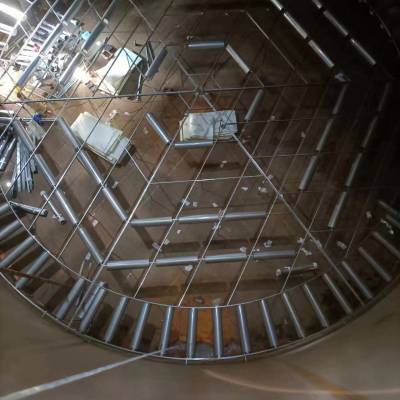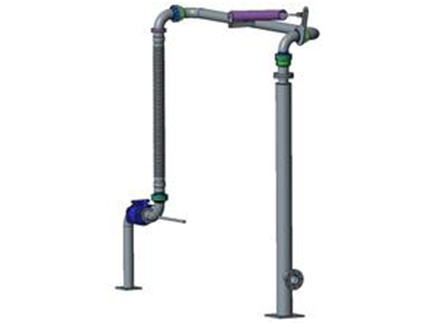单盘式内浮顶储罐英文(单盘式和双盘式浮顶罐)
Introduction to Single-Deck Internal Floating Roof Tanks
Single-deck internal floating roof tanks are specialized storage tanks primarily used for storing volatile liquids, such as crude oil and refined products. These tanks are designed to minimize the loss of stored materials due to evaporation, which can be a significant issue for many industries. The floating roof design allows it to rest directly on the liquid surface, maintaining a tight seal and reducing the exposure to the atmosphere. This article explores the working principle, advantages, maintenance, and applications of single-deck internal floating roof tanks, providing a comprehensive overview.
Structure and Working Principle
A single-deck internal floating roof tank consists of a fixed outer shell and a floating roof that sits inside the tank. The floating roof is typically made from lightweight materials like aluminum or stainless steel, allowing it to float on the liquid surface. The roof rises and falls with the liquid level, preventing the formation of vapor space above the liquid and reducing evaporative losses. A pontoon or double-deck configuration often supports the roof, with seals around the edge to ensure no vapors escape.
This system also reduces corrosion and contamination risks, as the floating roof acts as a barrier to environmental factors like rain and dust, which could affect the quality of stored liquids.
Advantages of Single-Deck Internal Floating Roof Tanks
Single-deck internal floating roof tanks offer several key benefits:
1. Reduced Evaporation Losses: The main advantage is the significant reduction in evaporative losses, which not only saves money but also helps to comply with environmental regulations.
2. Improved Safety: By preventing vapor buildup, these tanks reduce the risk of fire or explosion, making them safer for storing flammable liquids.
3. Enhanced Storage Efficiency: With less loss of volatile compounds, the storage process becomes more efficient and cost-effective.
4. Lower Maintenance Costs: Since the tank is sealed tightly, maintenance is less frequent, leading to lower operational costs.
Maintenance and Inspection
Regular maintenance and inspection are crucial to ensure the longevity and efficiency of a single-deck internal floating roof tank. Tank owners must monitor the condition of the seals and roof, as these parts are prone to wear and tear. Routine checks should include verifying the integrity of the floating roof, inspecting for any leaks or damage, and ensuring that the tank's venting system is functioning properly. Proper maintenance ensures that the tank continues to operate safely and efficiently over time, extending its lifespan.
Applications of Single-Deck Internal Floating Roof Tanks
Single-deck internal floating roof tanks are widely used in industries that require the storage of liquids prone to evaporation. These include:
1. Oil and Gas Industry: For storing crude oil, refined products, and chemicals, where minimizing evaporative losses is crucial.
2. Petrochemical Plants: To store volatile chemicals and liquids, ensuring safety and efficiency in production processes.
3. Environmental Compliance: These tanks help industries comply with environmental standards by reducing emissions and preventing hazardous spills.
Conclusion
Single-deck internal floating roof tanks provide a robust solution for the storage of volatile liquids. They offer numerous benefits, including reduced evaporative losses, improved safety, and lower maintenance costs. Their design and functionality make them an essential part of many industries, from oil and gas to petrochemicals. Regular inspection and maintenance are vital to ensuring the tank’s efficiency and safety, ensuring that it continues to meet industry demands and environmental regulations.
同类文章排行
- 吉林辽源化工厂定制采购的一批AL2543型汽车底部密闭装卸鹤
- 辽宁铁岭客户定制采购的一批AL2503汽车底部卸车鹤管(氟利
- 陕西渭南定制采购的一批 AL2543汽车底部密闭装卸甲醇鹤管
- 安徽淮南化工厂定制采购的一批AL2543型汽车底部密闭装卸鹤
- 陕西运城客户定制采购的一批AL1403顶部装车鹤管(浓硫酸鹤
- 株洲乙醇鹤管厂家揭秘:行业前景与选择秘诀
- 江西新余客户定制采购的一批AL2503汽车底部卸车鹤管(液氩
- 河南商用鹤管厂家电话,助您轻松解决高效输送问题
- 上海卸车鹤管厂家:高效、安全的物流解决方案
- 江苏装卸鹤管生产厂家:行业新标杆



